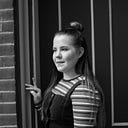Full Multimedia Analysis
Starting in September 2016, Time magazine began following three Syrian refugees as they prepared to give birth. One of these refugees is Taimaa, and her baby is Heln.
Though the Finding Home Project includes the stories of three different families, I decided to focus on Taimaa and Heln’s story: Heln’s First Year. The introduction to the project and the stories on Time’s page includes a video trailer, photos and a brief paragraph on each family.
Once arriving to Heln’s First Year, the audience is greeted by a short video clip of baby Heln. Then, a map of Europe is shown, with a caption stating that Heln was born in a hospital near a refugee camp 1,000 miles from home.
The story continues with photos, text messages (based on actual texts, voice mails and in-person interviews), short video clips and time stamps. Taimaa talks about how dirty the camp is and how the conditions aren’t ideal.
After a few photos and texts relating to the camp conditions, a text is shown from the Time reporter saying “I have been trying to reach out to you. Is everything okay?” This goes right into a clip of Heln with a breathing mask on saying that she was very sick with bronchitis.
The next part of the story is Taimaa’s trip on a bus to Athens for an asylum appointment. She had to take Heln out of the hospital to go. Their family is assigned to go to Estonia, which isn’t much better for them as they feel like outcasts and live in a dirty apartment.
The story wraps up as Taimaa and the family take a bus to Berlin and end up back in a refugee camp. The very end of the page includes some short sentences with updates on everyone in the family.
This story appeals to the news values of timeliness and relevance, at the time it was published. Now, the most important news aspect would have to be oddity, as it tells a story that many people are unfamiliar with and will never experience, and human interest, as it appeals to emotions and empathy.
Time’s use of videos and text messages is a great idea for this particular story, especially since one of the main news values is human interest. The videos, photos and texts really highlight what the family went through, and the texts specifically make it easy to connect to and very real.
I think overall, the photos, video clips, texts and maps worked well to help tell a cohesive story that would appeal to all. It allowed people to feel like they were a part of Taimaa’s journey, even if her experience and life is so different from those viewing the story.
